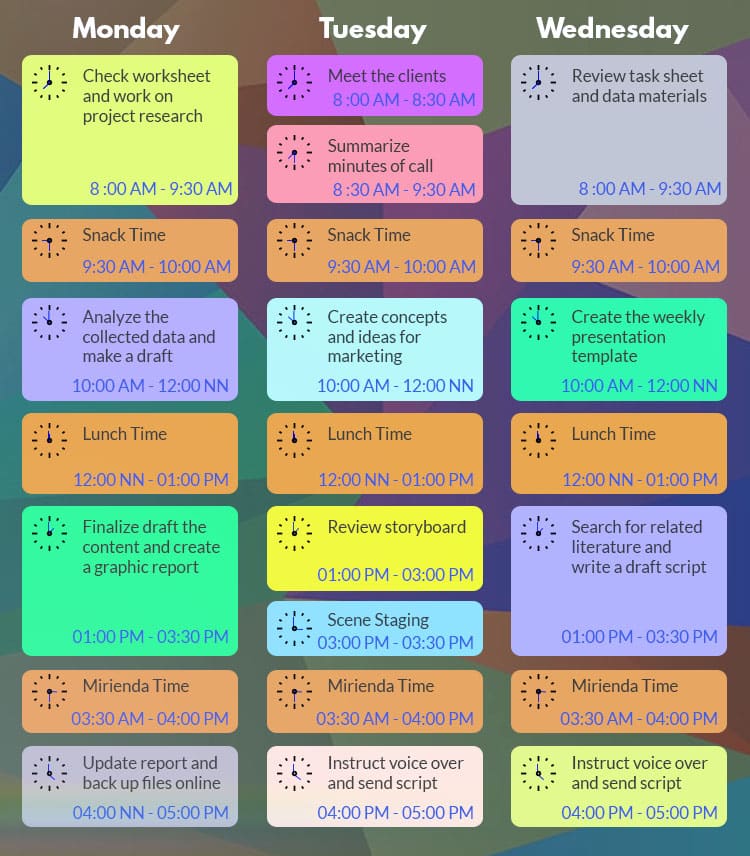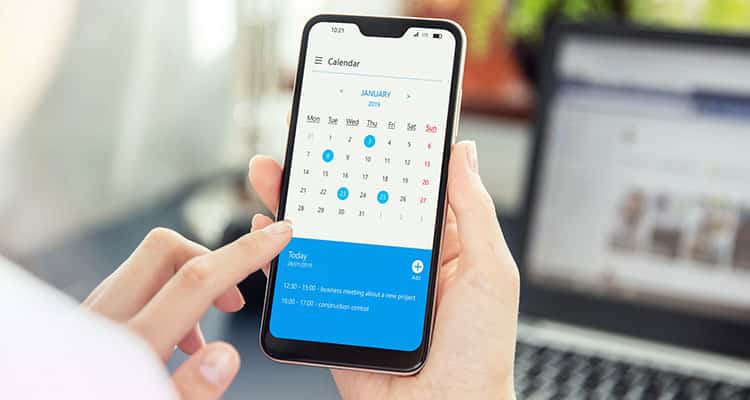Remote working gave us a lot of flexibility in our schedules. We can now manage our time to do work and activities that are more important such as a passion project or our family. But then, do you have instances where you can’t seem to finish all the tasks you need to do?
Well, I do too. So how do you maintain productivity with all the things you have to do? Time blocking might be the answer to your problems.
What is Time Blocking?
So what is time blocking? Basically, time blocking is scheduling your tasks with “blocks of time” in advance. It can be blocks for different projects or clustered similar tasks (like reading emails, replying to comments). It can even incorporate shallow work and deep work in the process. For example:

Compared to to-do lists, it conditions your mind beforehand. You don’t have to think about what to do during the day. It’s already scheduled, and you just have to execute.
But it’s not that easy. Here are 7 ways to make your time blocking effective in your remote working career.

Know Your Priorities
Have you ever heard of the Pareto Principle? It states that 80% of the output is caused by 20% of your input. So, when time blocking, you should know what your 20% are.
What are the things that you should be doing to get the best result? For example, you’re a freelance writer. What tasks should you be doing most to get the most return? That’s probably not checking emails.
You should be focused on marketing your services and, well, writing. So know your 20% to reflect it in your time blocks.

Know Your Most Productive Time
We all have different work cycles. And it’s related to our sleep cycles.
Some are early birds who can do productive tasks as soon as they wake up (kudos to you!). Some are just night owls who are more inspired in the evenings. By working for some time, you should already know yourself.
Ask yourself, when are you most productive? With that, you should be scheduling the most important time blocks with deep work during those moments. For example, if you’re more productive during afternoons, your most important tasks should be scheduled at that time.
Unless you have a strict deadline, as much as possible, you should not force yourself to do the heavy tasks in your least productive moments.
Conversely, you should be scheduling shallow work like replying to emails on your downtimes. In this way, you can utilize your time better than switching things around.

Use an App
Whether you like your handwriting or you just want to jot down your schedule, applications are far better in time blocking. With apps like Google Calendar, you can easily plot your time blocks on the go.
You can easily pull them out of the phone to edit. And you can even compare your progress from week to week.

Schedule Breaks
Some people might want too much productivity that they forget about breaks. Or worse, they just take breaks when they feel like it. The problem is, do you really take breaks when you “just like it.”
Some might be too engrossed in their work that they plow through the workday only to be burned out in the process. And some might just take too many breaks that they can’t do anything productive anymore.
Rest is important.
With time blocking, you should also schedule your breaks in between tasks. It can be as small as a 5-minute break or as far as an hour break after strenuous tasks. A Pomodoro timer might be a good tool for this.
With this, you can balance and recharge your energy to do more productive work the whole week long.

Place a Buffer
Most overestimate what we can do in a pocket of time. Only to be overwhelmed with the task at hand.
For example, you have a writing task time block scheduled for 30 minutes. But 10 minutes on it, you haven’t written anything. At the 25th minute, you are left scrambling for words that don’t make any sense anymore.
You don’t want to submit subpar output. You should place a buffer.
In the above example, you can schedule another time block for 30 mins on another hour or another day. With this, you can finish your 30 min time block knowing that you can still continue the task on the next time block.
I’m not saying that you procrastinate. Still, do your best on every time block. But then, this technique can just relieve you of the pressure. And might produce better results afterwards.

Overflow Day
There will be some days that you can’t finish your tasks. Forgive yourself. No one is perfect. But you can remedy it.
If the unfinished tasks just piled up, you can have an overflow day. An overflow day is a time assigned to finish all your pending tasks. But I don’t suggest that you do this frequently.
Use this as a last resort. And fix your next time blocks to accommodate your tasks better.

Evaluate Your Performance with a Weekly Review
After every week, it’s time to evaluate. Did you make the most out of your week? If the answer is no, what can you do about it?
Maybe you can allot more time blocks for your priorities. And lesser for the administrative tasks. You can also think of how you can automate some of your tasks to give you more time.
If you’ve done well, how do you make it even better? Productivity should be consistent. And these weekly reviews can surely create better results moving forward.

Conclusion
It’s time to be productive with your career. With time blocking, you can create measurable and attainable steps to reach your goals. Cheers to a thriving remote working career!

